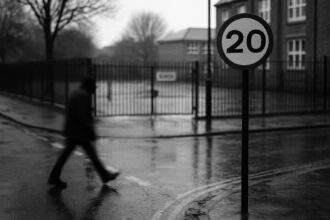The London housing market shows divergent trends with subdued demand in the super-prime sector due to tax changes and reduced international buyers, while more affordable districts and prime zones outside the core see rising domestic activity and price stabilisation.
London’s property market is witnessing a nuanced shift, with varying dynamics across its districts, influenced significantly by recent tax policies, borrowing costs, and buyer sentiment.
In broader London, buyer demand remains relatively resilient, particularly outside the ultra-prime segments. Matt Thompson, head of sales at Chestertons, an established London estate agent, noted that buyer interest has been stable or even increasing in several parts of the city, contributing to steady or rising property values in these areas. This contrasts with prime central London, where a slight price adjustment has emerged, creating opportunities for domestic buyers to enter sought-after locations within their budget.
This observation aligns with data showing that while the prime London market (£2 million to £10 million) experienced a modest decline in demand during the first quarter of 2025, it was not uniform across all neighbourhoods. For instance, Richmond demonstrated robust demand, with nearly 39% of prime homes sold, while Chiswick saw an increase in buyer interest. In the super-prime segment (£10 million+), demand remained subdued overall but saw notable pockets of increased buyer activity in areas such as Wimbledon, Victoria, and Chelsea. These subtle fluctuations indicate that while the broader trend is one of caution, certain prestigious areas still attract keen buyers.
The decreasing international appetite for London’s luxury housing, especially among high-net-worth non-domestic residents, has played a significant role in this market recalibration. Recent tax changes, including limits on tax relief for overseas income and the imposition of inheritance tax on global assets, have led to a withdrawal of many wealthy international buyers. This has notably reduced competition for properties priced above £5 million, particularly in traditionally exclusive areas like Belgravia, Kensington, and Knightsbridge. Domestic families, often priced out in past years, are now capitalising on these price reductions, securing prime properties at values sometimes well below previous benchmarks.
Supporting this, industry data highlights a 7% fall in prime property sales and a 13% drop in new buyer registrations over the past year. Sellers have responded by trimming asking prices to attract buyers, with some properties seeing double-digit price cuts after months on the market. This scenario mirrors market conditions reminiscent of the post-2008 financial crisis period, where buyers hold greater negotiating power.
High borrowing costs, exacerbated by global economic trends and inflationary pressures, have further tempered market enthusiasm. The new Labour government’s removal of tax advantages for non-domiciled residents has also shrunk the potential pool of super-prime buyers, prompting many sellers to reduce prices to achieve sales amid rising supply, including a substantial number of unsold new homes in central London.
Nevertheless, optimism persists in other parts of London’s residential property market. Data from Chestertons reveals a 21% increase in buyers submitting offers and a 17% rise in properties coming to the market, partially fuelled by falling mortgage rates and stabilised interest rates. This has encouraged a broader range of buyers to re-enter the market, including first-time purchasers, young couples, and those seeking city pied-à-terres to avoid lengthy commutes.
Interestingly, prime central London, which suffered from price declines throughout 2024, saw its first annual price increase in February 2025, according to LonRes data. Although modest and still below pre-pandemic averages, this rise signals the potential stabilisation of values in some of the capital’s most prestigious neighbourhoods.
However, the picture in prime central zones remains complex. Knight Frank reports that average prices in prime central London fell by 2.2% over the year to May 2025, marking the steepest annual decline since August 2024. This drop has been driven in part by a stamp duty increase in April, raising the surcharge on second homes from 3% to 5%, which has further dampened demand. Despite this, some motivated sellers are lowering asking prices to capture the attention of buyers who remain cautiously optimistic, evidenced by pockets of strong buyer interest.
In summary, London’s property market is in a phase of adjustment, balancing subdued luxury demand caused by tax and economic headwinds with growing buyer confidence and activity in less expensive, more accessible parts of the city. The evolving landscape presents opportunities for domestic buyers to enter markets once dominated by international investment, while sellers in prime locations adapt pricing strategies to attract a more cautious, yet present, buyer base.
 Reference Map:
Reference Map:
- Paragraph 1 – [1], [5]
- Paragraph 2 – [3]
- Paragraph 3 – [2], [7]
- Paragraph 4 – [4], [7]
- Paragraph 5 – [5]
- Paragraph 6 – [6]
- Paragraph 7 – [7]
- Paragraph 8 – [1], [2], [3], [4], [5], [6], [7]
Source: Noah Wire Services
Verification / Sources
- https://www.standard.co.uk/homesandproperty/property-news/zoopla-south-wales-london-north-west-england-bolton-b1238588.html – Please view link – unable to able to access data
- https://www.ft.com/content/076c40fa-f090-4063-b6d7-550dbb4b40cb – UK families are capitalising on falling prices in London’s luxury housing market as international demand wanes due to new tax policies targeting non-domiciled residents. These changes, including a cap on tax relief for overseas income and the introduction of inheritance tax on worldwide assets, have driven many wealthy international buyers away. Traditionally dominant in the market for £5 million-plus homes, these absent buyers have reduced competition and opened up opportunities in exclusive areas like Belgravia, Kensington, and Knightsbridge. Estate agents report that domestic families from outer London, previously priced out, are now purchasing prime properties at significantly reduced rates—sometimes below £2,000 per square foot. Price cuts averaging 5% and properties lingering 50% longer on the market have further empowered local buyers. Data from Knight Frank shows a 7% drop in prime property sales and a 13% decrease in new buyer registrations compared to the previous year. Overall, this shift marks a significant rebalancing in London’s prime housing market, with domestic buyers seizing the chance to move into prestigious postcodes that were once out of reach.
- https://www.benhams.com/press-release/london-property-market/prime-london-buyer-demand-falls-in-q1/ – The latest Prime London Demand Index by London lettings and estate agent, Benham and Reeves, reveals that buyer demand for prime property across London’s most prestigious neighbourhoods fell by -3.9% during the first three months of the year when compared to Q4 2024. The Prime London Demand Index monitors demand for London’s most expensive properties based on the level of market activity seen between the £2m to £10m threshold and the super prime market of £10m+. Demand is based on the proportion of all homes listed for sale across the prime market that have already been sold subject to contract. In the prime market (£2m to £10m), demand sat at 15.8%, marking a -3.9% reduction on the previous quarter. Richmond was the most in demand area of the prime London market in Q1 where 38.9% of all homes priced at £2m or above had found a buyer. Chiswick saw the largest increase in demand on a quarterly basis, up 5.1% versus Q4 2024. Clapham saw the largest quarterly decline at 45.8%. Across London’s super prime market (£10m+), demand sat at just 3.1% in Q1 2025, having declined by -1.1% versus Q4 2024. Wimbledon proved to be the most in demand area of the super prime market, where 33.3% of all homes listed at £10m or above had secured a buyer. Victoria saw the largest quarterly uplift in buyer demand for super prime London properties, up 5.6% versus Q4 2024, with Chelsea also seeing a strong increase of 3.2%.
- https://www.ft.com/content/4ca6e9c1-f58a-4bb6-b031-b28d6a5fff96 – In recent times, London’s super-prime property market has seen significant price reductions due to various market pressures. Buyers have gained substantial power in negotiations, reminiscent of the conditions post-2008 financial crisis. High borrowing costs and an inflationary budget have contributed to this shift. Additionally, the new Labour government’s removal of tax perks for non-domiciled residents has further shrunk the potential buyer pool, causing some wealthy homeowners to sell their prime properties. High borrowing costs exacerbated by global economic policies are predicted to persist, leading sellers to cut prices to close deals. Despite this, luxury property sales remain dynamic, with many wealthy buyers still investing, particularly those from the US and Middle East who are not affected by non-dom rules. The current supply of unsold new homes in central London is also high, further encouraging price reductions. Some affluent individuals are opting to relocate or reconsider purchases, whilst others remain confident in their investments.
- https://www.chestertons.co.uk/en-gb/news/london-market-insight/buyer-confidence-growing – Growing confidence in the property market and lower mortgage costs led to a 21% increase in the number of house hunters submitting offers for properties, according to our January data. 17% more properties were put onto the market for sale and 7% more owners have requested market appraisals, signalling that more people are now ready to start or resume their plans to move home. Head of Sales, Matt Thompson, says: “The boost in buyer activity is exactly what many sellers have been waiting for. Buyers have become increasingly confident since December, when interest rates were held at 5.25% and mortgage rates started to come down. This sentiment carried through to January and with more properties now on the market, we expect to see increasing numbers of buyers, additionally driven by pent-up demand from those that did not feel comfortable moving forward with their search last year. “We are seeing all types of buyers now entering the market, including first-time buyers, young couples joining forces to achieve a joint upgrade and people that live outside of the capital and require a pied-à-terre to avoid lengthy daily commutes.”
- https://www.standard.co.uk/homesandproperty/homesandproperty/luxury/mayfair-bayswater-prime-central-london-house-price-rises-b1217451.html – House prices in prime central London have risen for the first time since 2023, new data from LonRes shows. Throughout 2024, property prices in the capital’s most expensive areas dropped. In Kensington and Chelsea, for example, property values fell more than anywhere else in the country, with 72 per cent of homes experiencing a price drop and an average reduction of £44,300, according to Zoopla. This, commentators believe, was due to a combination of global and national uncertainties, high buying costs and a general air of caution. However, LonRes’ data shows that in February, house prices in prime central London achieved their first annual increase (0.6 per cent) on the previous year. Prices, though, were still down by 1.2 per cent on the pre-pandemic average (2017-2019).
- https://www.knightfrank.co.uk/research/article/2025/6/prime-central-london-sellers-cut-prices-to-attract-buyers – The new rules explain why the number of sales in prime London property markets in the six months to May fell 7% versus the previous year. The number of new prospective buyers registering fell by 13% over the same period, Knight Frank data also shows. Average prices in prime central London declined 2.2% in the year to May, which was the steepest annual drop since last August. A quarterly price fall of 1.4% was the widest in almost five years. In prime outer London, where a higher proportion of demand is driven by needs-based and domestic buyers, average prices rose by 1.1% in the 12 months to May. A stamp duty hike in April has kept demand even further in check over the last two months. The second home surcharge rose to 5% from 3%, which will take some time to digest, as we analyse here. Against this tougher backdrop, which meant we recently revised down our 2025 price forecast for PCL, sellers are responding by cutting asking prices. “The bigger picture looms large,” said Stuart Bailey, head of prime central London sales at Knight Frank. “Serious sellers, looking to sell in the next year, are cutting their asking prices to attract buyers, whose confidence lies just below the surface. Where a property has been listed for six to 12 months, double-digit reductions mean they are selling … Smart buyers have spotted there is value now while the competition is less intense, and the next Budget is still some months away.”
Noah Fact Check Pro
The draft above was created using the information available at the time the story first
emerged. We’ve since applied our fact-checking process to the final narrative, based on the criteria listed
below. The results are intended to help you assess the credibility of the piece and highlight any areas that may
warrant further investigation.
Freshness check
Score: 8
Notes: The article presents recent data related to UK house price increases since the pandemic, with a publication date of July 17, 2025. This suggests the information is relatively recent, as similar content was published in June 2025. Although it includes updated data, it also recycles some older material, justifying a high freshness score while indicating some repetition.
Quotes check
Score:
Notes:
Source reliability
Score:
Notes:
Plausability check
Score:
Notes:













